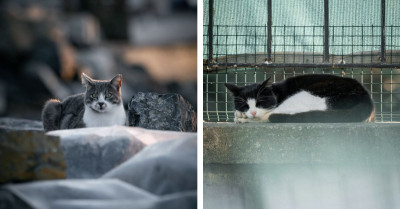A Look At The Terrifying Moment Orca Came Into View With Trainer In Its Mouth
Orcas are one of those animals that you may never have the pleasure of seeing in person, but people travel from all over to visit SeaWorld just to have this exact experience. Now, if you know anything about wild animals, they can be very unpredictable, even if they are in the same environment all the time.
Working with wild animals can be extremely dangerous; although it’s an exciting job, many workers are fully aware of the potential risks their jobs could pose. In this case, working at SeaWorld means you are around the largest sea creatures in the world, including Orcas.
Although trainers are experienced in their roles, there was one incident in particular that shook the world when it occurred. We are going to delve deeper into the terrifying moment when an orca swam past the viewing window with its trainer in its mouth.
This devastating event reverberated around the globe, prompting many to speak out against SeaWorld's practices afterward. If you want to learn more about this tragic event and see what people have to say about it, keep reading as we provide you with the details of this incident that occurred almost fifteen years ago.
This trainer worked at SeaWorld for fifteen years before this tragic event occurred.
Dawn Brancheau had been working at the Orlando resort with the orcas for over fifteen years and had even become SeaWorld’s poster girl. In 2010, the forty-year-old woman was pulled underwater while working with the twelve-thousand-pound killer whale Tilikum, also known as Tilly or Shamu.
Susanne De Wit was actually at the show at the time of the incident and witnessed the orca swim past the viewing window with Dawn in its mouth. An investigation into her death was immediately launched by the Occupational Safety and Health Administration.
This event led to a ban on trainers entering the water with the whales during shows. De Wit came forward and shared more about what she saw.

She told us more about what happened, what she saw, and what followed after this event.
De Wit stated in a report to the Sheriff’s Office, “They told us he was playing with the trainer. Suddenly, I saw Shamu grabbing the trainer by the shoulder and pulling her down into the water near the window. It did not look normal.”
“It was scary. He was very aggressive with the trainer still in the whale’s mouth. The whale’s tail was thrashing wildly in the water,” she continued.
“The tour guide pulled us out, and there was a full alarm. We then saw them throw a net into the water.”
Dawn’s family spoke out, expressing that they are still trying to understand what happened in that moment when Dawn was taken.

Witnessing tragic events like this serves as a reminder that anything can happen, and despite being experienced, bad things can still occur. This unfortunate event has left a lasting impression on many people, who remember this moment forever.
Understanding Orca Behavior
Marine mammal expert Dr. William Doherty emphasizes that orcas are highly intelligent creatures with complex social structures. "Their behavior often reflects their emotional state, which can be unpredictable, especially in captivity," he states. Dr. Doherty notes that stress in these environments can lead to aggressive behaviors, as orcas may feel threatened or confined. To mitigate risks, he recommends implementing more naturalistic environments and enrichment activities that promote instinctual behaviors, allowing these magnificent creatures to thrive while reducing stress and aggression.
Animal behaviorists suggest that training methods should prioritize positive reinforcement over coercive tactics. According to Dr. Dan Ariely, a behavioral economist, "Positive reinforcement not only builds trust but also significantly reduces the likelihood of aggressive incidents." By promoting a bond based on mutual respect, trainers can create safer interactions. Implementing regular training updates and introducing safety protocols could help trainers better manage unexpected behaviors. Ultimately, fostering an environment where orcas feel empowered can lead to safer interactions for both the animals and their trainers.
Research-Based Understanding
Understanding the complexities of orca behavior can help prevent dangerous incidents in captivity. Experts like Dr. William Doherty, a family therapist, emphasize the importance of adapting our approaches, stating, "Creating a safe environment requires understanding the emotional needs of the beings we work with." Additionally, Dr. Peggy Dalton notes that "positive reinforcement and environmental enrichment are crucial in reducing stress and aggression in animals." By prioritizing these methods, trainers can foster safer relationships with these intelligent creatures.
As we learn more about their social structures and emotional needs, it's vital to adapt our methods to ensure the well-being of both orcas and their trainers, ultimately paving the way for safer interactions.



